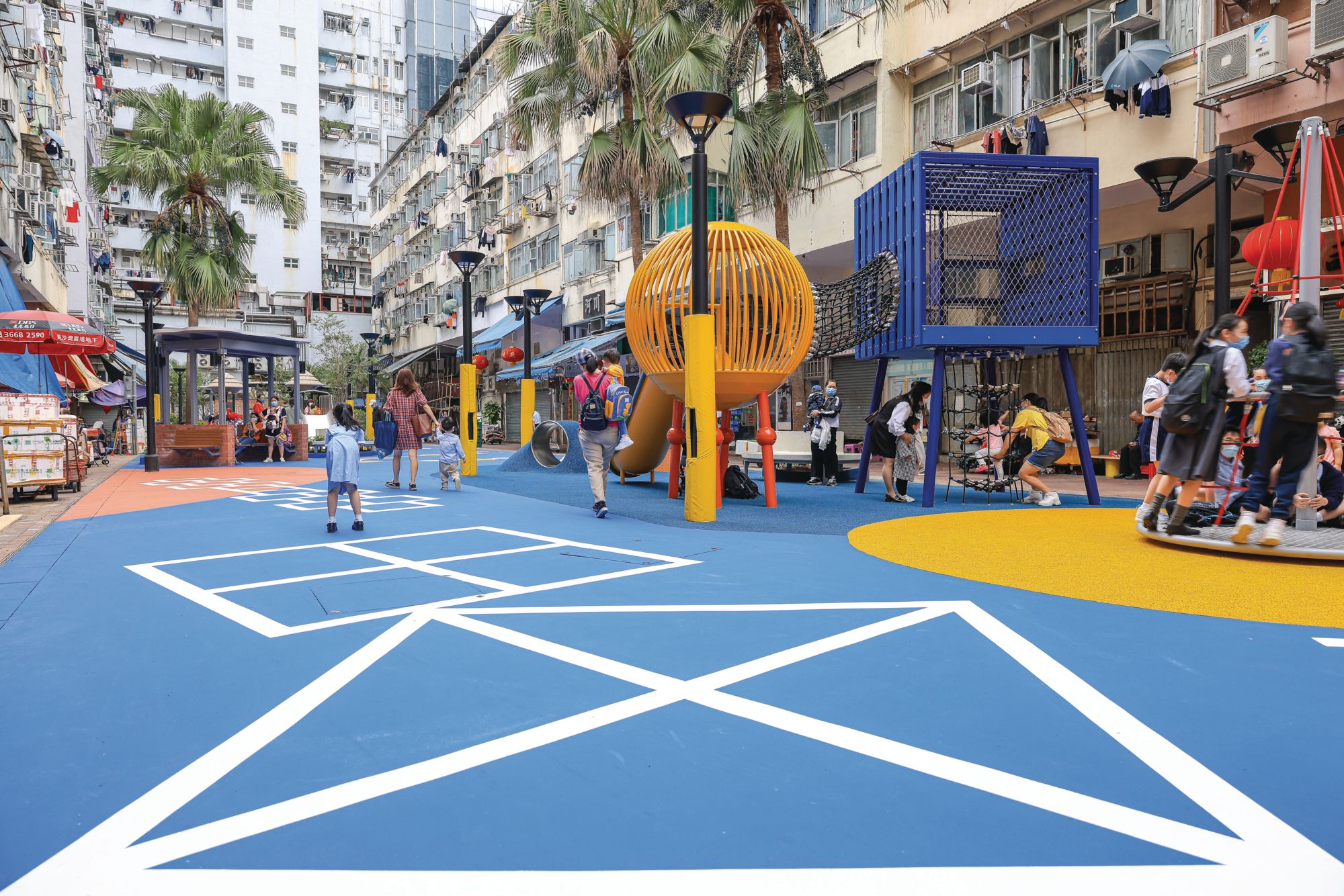Marisa Yiu and the Design Trust have overhauled a decrepit city park into a neighbourhood oasis to bring a community together
On a bright spring morning in Tsuen Wan, Marisa Yiu was examining the finishing touches on her newly finished living room, designed in a pleasingly elementary palette of pool blue, marigold and maize terrazzo. Only this was not technically her living room, but everyone’s.
Yiu, a co-founder and the executive director of Design Trust, was realising a vision three years in the making, the first of four micro-parks designed in Hong Kong to revitalise public spaces. This one, called The Communal Living Room in Yi Pei Square Playground, transformed a space not long ago marred by violence during the 2019 protests into one that would bring together local communities in positive ways, with vibrant slides and accessible equipment for children, and sitting-out areas for adults that stand in contrast to the neighbouring mahjong and gambling parlours.
The design was conceived by a team of young creative professionals familiar to Design Trust, working under the mentorship of architect Mimi Hoang, and brought together public and private interests in an experiment that Yiu hopes to expand with additional micro-parks under the umbrella of the Design Trust Futures Studio’s Play is for the People programme, each with a unique aesthetic and design concept, as she discusses here:
See also: 10 Unexpectedly Revitalised Historic Sites in Hong Kong: Now and Then

What is a “micro-park”?
I’ve always been fascinated with definitions and categories of public space, and know space and proportion is always relative to an urban context and social condition. A few years ago there was a lot of discussion about micro-apartments and the phenomenon of shrinking apartment sizes, so with Hong Kong facing a lot of pressure in terms of space and density, how can we balance that with shared public space? How can we think about the city as our living room and be more creative with our parks? As cities around the world become increasingly dense, they are developing pocket parks for breathing areas, and as there is no true definition of this term I thought it would be applicable as a counter to the micro-apartment phenomenon.
Back in March 2018, I recall the government claimed to manage 1,549 small parks, gardens and sitting-out areas, of which 44 are under 100 sqm. The most common would be the smaller sitting-out areas in Wan Chai or Mong Kok, which are literally squeezed between two tong laus. I’ve always been fascinated with urban public spaces sandwiched in between buildings or under flyovers, and thought, “How do we deal with this?”
